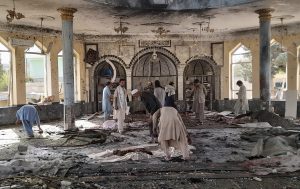The Islamic State (IS) garnered global media attention in 2014, when its forces scored a series of sweeping battlefield victories and territorial gains across swathes of Iraq and Syria. The establishment of the Caliphate and the appointment of Caliph Abu Bakr al-Baghdadi reverberated throughout the region and galvanized Islamic radicals around the world. At the Islamic State’s height, it forged its place in jihadist history by attracting an unprecedented variety of foreign fighters, inciting or directing a high level of attacks throughout the world, and developing an unmatched propaganda apparatus. Further, IS inspired a plethora of existing and new jihadi groups from all over to pledge allegiance, spreading its tentacles with the establishment official branches throughout Asia and Africa.
With the physical rollback of Caliphate territory in the Middle East, IS and its branches became primarily focused on fighting local governments, militias, and other aligned forces, markedly scaling down extra-regional attacks and operations against foreign interests. However, the Islamic State Khorasan Province (ISKP) branch, based in Afghanistan, has emerged as an exception to this.
ISKP has internationalized its media strategy while ramping up attacks on neighboring countries and international targets, such as diplomatic missions and foreign nationals. ISKP’s Al-Azaim Foundation for Media Production has dramatically expanded and is now ambitiously producing propaganda in far more languages than any other IS branch – particularly since the Taliban’s August 2021 takeover of Afghanistan.
This has prompted the outfit to internationalize its scope, and, most recently, ISKP has taken to publishing in-depth geopolitical analysis and identifying opportunities in the new multipolar world. To better understand how and why ISKP has ascended to become a leader among the IS movement in promoting global jihad, it is necessary to examine the group’s origins, history, ideological influences, and strategy.
ISKP’s Transnational Roots and Vision
Islamic State Khorasan Province has been transnational since its nascent phase in 2014-15 as it expanded operations in parts of Pakistan and throughout Afghanistan. From its earliest stage, ISKP had a complex range of adversaries – some were even fighting each other – such as the U.S.-led international coalition, the Pakistani state, the Afghan Republic government, and Taliban forces.
Signs of the group’s media strategy direction were discernible in the statements from early ISKP leadership. For instance, the January 2016 issue of the Islamic State’s flagship magazine series, Dabiq, included an in-depth interview with the wali of Khorasan Province, Shaykh Hafidh Sa’id Khan. The feature provided important early insight into ISKP’s regional vision and its role in the greater international IS movement.

































